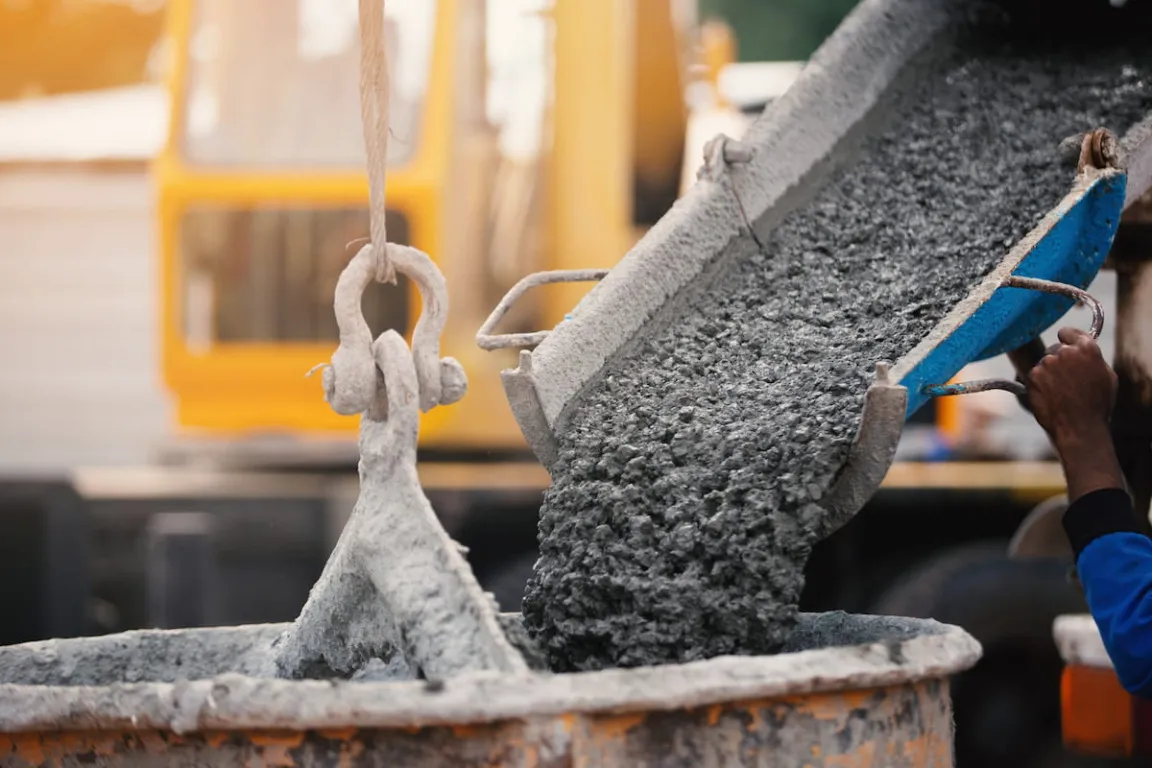In the modern construction industry, efficiency and accuracy are two important things. One innovation that supports this is the concrete pump. This tool is used to pump concrete from a mixer truck to the casting area quickly and accurately, replacing manual methods that are time-consuming and labor-intensive.
Concrete pump is widely used for pouring in areas that are difficult to reach, such as basement floors, swimming pool foundations, or multi-story building structures. It is no surprise that this tool is often seen in large construction projects due to its ability to speed up the casting process.
This article will discuss in detail what a concrete pump is, how it works, the different types, and its benefits in the construction industry.
What Is a Concrete Pump?
A concrete pump is a tool used to pump and deliver concrete from a mixer truck to the pouring site. This tool plays an important role in speeding up the casting process, especially in multi-story building projects and reinforced concrete structures.
With the help of a concrete pump, casting can be done in areas that are difficult to reach manually or inaccessible by mixer trucks. Concrete pumps usually consist of several main components. Trailers or trucks serve as supports for the pump system, both for the boom pump and the line pump.
Boom pump has long arms and support frames for pouring concrete into formwork, which is usually located in a high area. Meanwhile, line pumps use pipes to deliver concrete and can also be used to pump other materials, such as cement, lime, or mortar.
How Concrete Pump Works
Concrete pumps work by reaching the casting area so that the process can take place more quickly and reduce the risk of segregation, which is the separation of aggregate particles due to a concrete mixture that is not liquid enough. This tool is operated using a hydraulic and electrical system.
It works by connecting the material cylinder to a hydraulic cylinder that moves alternately. When concrete is pumped from the mixer truck, the material cylinder is pulled back so that the concrete mixture enters the cylinder and is ready to be delivered to the casting point.
Read also: Types of Building Foundations for Sturdy High-Rise Structures
Functions of a Concrete Pump
A concrete pump is used to facilitate the casting process, especially in areas that are difficult to reach. Here are some of its main functions:
- Delivering concrete to narrow locations: A Concrete pump does not require a large space because the delivery pipes can pass through small passages or confined areas.
- Delivering large volumes of concrete: With the support of technology, this tool is capable of delivering large amounts of concrete to the pouring location quickly and efficiently.
- Reaching multi-story buildings: The long and flexible pump arm allows pouring to be carried out up to the top of tall buildings.
Types of Concrete Pump
Concrete pump comes in several types tailored to the needs and scale of the project. Each has its own characteristics and functions, ranging from small projects to large-scale construction. Here are some commonly used types of concrete pumps.
1. Mini Concrete Pump
Mini concrete pumps are suitable for areas with narrow access roads where only small vehicles can pass. These pumps are generally used for casting 1 to 2-story houses.
2. Long Boom Concrete Pump
A long boom concrete pump has an arm length of up to 25–33 meters and is capable of pumping concrete at a pressure of 8 Mpa–40 Mpa, depending on the height of the building. This tool is commonly used for high-rise building construction projects from the 4th floor upwards, such as office buildings, apartments, malls, multi-storey houses, swimming pools, and shop houses.
3. Portable Concrete Pump
A portable concrete pump is a type of concrete pump with the widest range. This tool is commonly used for outdoor projects, such as the construction of reservoirs, dams, ports, and telecommunications towers.
Because it can pass through narrow access points the size of a private car, this pump is ideal for areas that are difficult to reach and is capable of pumping concrete through pipes up to a distance of 100 meters.
4. Standard Concrete Pump
A standard concrete pump is a type of concrete pump that is suitable for low-rise buildings, such as shop houses, private homes, or restaurants, with a height of less than 20 meters. The concrete pressure produced usually ranges from 4 to 7 MPa.
Read also: Batching Plant: Definition, Components, and Requirements
Where Can Concrete Pumps Be Used?
Concrete pumps are highly flexible and efficient tools in various construction projects. With their ability to reach areas that are difficult to access and distribute concrete with precision, these tools are widely used in the following situations:
- Industrial projects: In the construction of industrial facilities, concrete pumps accelerate the casting of floors and other supporting structures for operational needs.
- Infrastructure projects: In projects such as roads, tunnels, or dams, concrete pumps assist in casting over large areas with consistent concrete thickness and strength.
- Complex structures: Projects with complex structural shapes require precise casting. Concrete pumps help reach difficult areas and create neat resultsin casting.
- High-rise building construction: Concrete pumps enable casting in multi-level areas that are difficult to reach manually, making them ideal for high-rise building construction.
- Housing construction: Used for casting walls and vertical parts of multi-level houses in housing construction projects.
- Bridge construction: Used for casting in hard-to-reach parts of bridge structures, such as pile foundations or specific elements, concrete pumps ensure precise and sturdy results.
- Column and beam construction: Concrete pumps are suitable for casting concrete in confined areas on conventional building projects, such as columns and beams, with more accurate results.
- Horizontal surface casting: Suitable for casting floors, sidewalks, or other flat areas because it can spread concrete evenly and quickly.
- Renovation and maintenance: Concrete pumps facilitate repair work in hard-to-reach parts of buildings, such as columns or walls in confined spaces.
That concludes the discussion on concrete pumps, tools that make the concrete casting process faster, more efficient, and more precise. For maximum results, concrete pumps should ideally be used in combination with high-quality ready-mix concrete that guarantees strength and consistency in the cast results.
Semen Merah Putih offers a range of premium Ready Mix Concrete products, starting with Semen Merah Putih ULTRAMIX-G, which suitable for general construction such as buildings and roads, Semen Merah Putih PRIMAPLUS, which designed for resistance to aggressive environments, Semen Merah Putih FLEXIPLUS, which is flexible for various types of projects, to Semen Merah Putih SUPERMIX, which is dense and easy to apply for casting.
All these products are manufactured in a certified batching plant with strict quality control and a wide distribution network, ensuring your project runs smoothly from start to finish.
Are you currently working on a construction project? If so, never settle for quality and always coose high-quality cement for the best results! Contact us now to learn more about Semen Merah Putih products and find the best construction solutions for your project!
Read also: Concrete Compressive Strength: Definition and Underlying Factors



